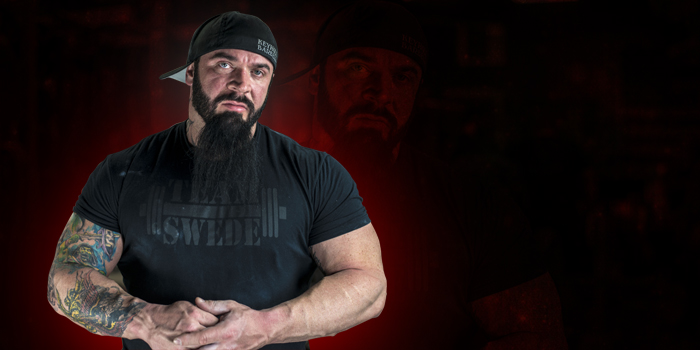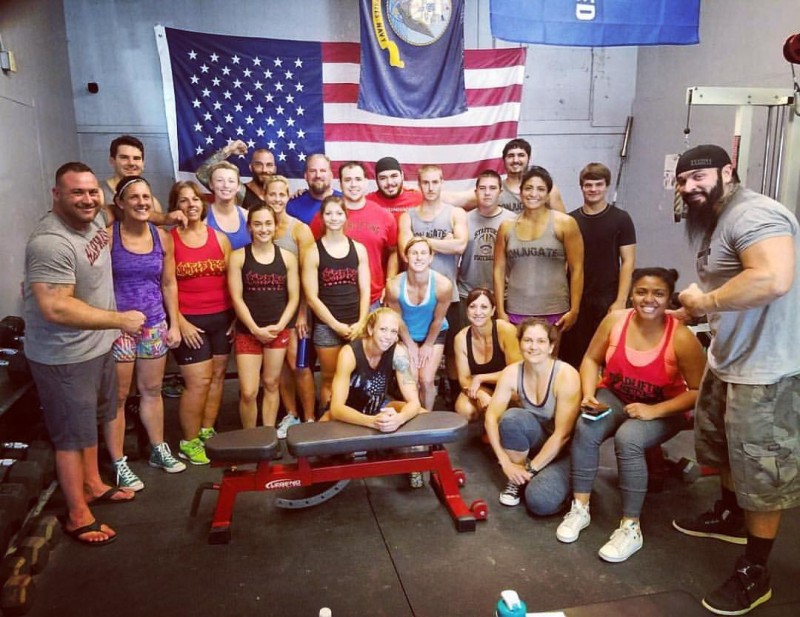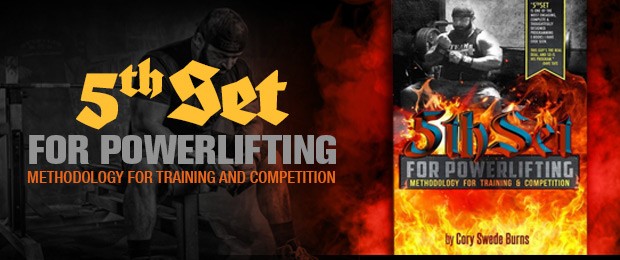
I lost a lifelong friend this week. Everything in your personal life can be on track when you get hit with information like that, and it will still derail you.
Between my exhaustive travel schedule, online coaching responsibilities, keeping Keyhole Barbell in working order, finishing my book and maintaining my column on here, it is pretty safe to say that my personal life was not on track even before I woke up to this news on Friday morning. So it added to an already untenable situation.
But I am good at this shit. It's where I shine. When I am under pressure, with deadlines and a seemingly insurmountable pile of tasks to accomplish, I just take a deep breath, chip away at the work in front of me, and before too long I am back on track. I am good at life.
After all, there are worse problems to have than lots of work. I've been hungry and unable to get food. I've been in the hole, in state prison, and much worse that I won't mention right now. So managing a few businesses, dealing with myriad, eager customers and colleagues on a daily basis and traveling all over (and off of) the continent to teach my methods — these have been welcome changes over the last decade or so.
Everything I just listed notwithstanding, I did lose a lifelong friend this week and it did derail me. So I knew I should take some time for myself and at least handle work from my phone and iPad for a few days.
I decided to drive seven hours to my favorite beach for the weekend and I am sitting on it now, writing this. After the weekend I am going to head back to Philly, where I grew up, to lay my friend to rest.
For now, I am getting my thoughts together so that I can address some questions I received, on one of my Facebook discussion posts for article topics, about breathing for the lifter.
There is nearly a full moon on the beach at sunset. The sun is gone and the light from the moon is beginning to take over. Its reflection is shining on the ocean horizon so subtly that I can't even capture it in a photo. I tried.
The girl I am with says the waves come down like foamy stairs to the sky.
I'm being more poetic and paraphrasing, but that's basically what she said. I am taking deep breaths of the salty ocean air. The breathing, combined with the poetic descriptive for the horizon, is what brought this article back to my mind and started me writing it. So, on we go with that.
When it comes to training the main lifts safely and effectively, bracing is the main thing — point which I addressed at length in my last article. Simply breathing correctly is not going to cut it. Breathing is a mechanism of the bracing, though, and a very important one. So I wanted to write this follow-up article to touch on some of that.
Breathing low or "filling low" is a helpful cue to activate the muscles we will use to brace in the correct manner. In other words, without mastering the breathing, you are probably not going to be able to master the bracing.
When I use the term "filling low," in this instance, I am referring to using diaphragmatic breathing to do just that: to "fill low," generating pressure to help expand the lower abdomen, which we will then brace against. Diaphragmatic breathing simply means that you are using the diaphragm muscle to breathe. The diaphragm is a muscle that sort of wraps around the entire circumference of the top of the abdominal wall like a beanie hat.
But there are bunch of different applications for this type of breathing, so, quite a few ways to do it. It can be used as a form of relaxation during meditation, which demonstrates that simply cueing diaphragmatic breathing won't keep you safe lifting. This is where we need the marriage of breathing and bracing I described above.
My teammate, Joe Sullivan, made a video demonstrating an awesome technique for "filling low," without calling it that, and he did a great job. So there is no reason for me to make another. I'll include that here for you to check out.
The safety benefits of learning to breathe and brace correctly aside, I think most lifters underestimate the immediate performance enhancing component of the kind of stability these techniques can provide.
A prime example comes to mind from when I recently had Crystal Guznikzak out to Keyhole to work with me for the day on her lifts. Probably the biggest lightbulb moment of the whole trip was when she learned how to breathe and "fill low" when bracing for the bench press. This technique can be used for every lift, but in this case it was a bit of breakthrough.
Crystal has already been using my setup, taught to her by a friend who attended one of my seminar, but without the missing puzzle piece of bracing and filling air properly, the midsection stayed too loose to transfer energy effectively.
I teach the bench press as a mechanical system and for that system to work properly, kinetic energy must be transferred efficiently through the torso in both directions. In order for that to happen,the torso must remain very stiff, the energy from the bar's descent shifting into the legs and firing back off the entire tensioned system on the press itself.
When a lifter has this mechanical system set up and functioning correctly, it affects me to watch it; like a sort of visual music, like the moonlight on a foamy staircase of waves. I want to teach everyone to move that way on the bench. (That's the chief reason I am on the road for over 30 weekends per year.)
For the sake of thoroughness, I'm going to touch on a couple of more things about breathing for the powerlifter.
A lifter should never be breathing while the bar is in motion.
What do I mean by that? I'm not saying to hold your breath for the whole set. I mean you should be filling your air as part of a checklist you have in your head, before initiating every rep.
In other words, breathe between reps.
Once you learn to hold your breathe and brace effectively for more than one rep, you can do that. But I have everyone I work with reset their air every single rep and treat it like a series of successive singles while they are mastering it.
It's easier to hold your air for multiple reps during lighter work (like a very high rep protocol second pressing day) but take my advice on this for your main work until you get the hang of it. And once you do, still only breathe between reps.
It is never too soon for a lifter to learn about breathing.
One of the questions I got on the Facebook discussion post for article topics was when a lifter should start worrying about breathing. Breathing and bracing are fundamental to your growth as a lifter. The sooner you can master them, the better. This is Day 1 stuff at Keyhole Barbell.
I will leave you with an update on my rehab progress, which I mentioned in the bracing article last month. To this point, I've followed my game plan to the letter and things could not be going better.
As of this weekend, it will be 35 days that I have not put a substantial axial load on the spine. I've been pain-free for over four weeks and I am chomping at the bit to get back on track. My rehab to this point has consisted of multiple cycles of my bracing routine three times per day and two pressing/pulling workouts rotated back and forth every other day.
One of the workouts is a pressing day where I bench with my feet up for 5 sets of 30, followed by the rounds for time protocol with either flies or triceps extensions (I go back and forth).
The second workout is a pulling day where I do chest supported incline dumbbell rows for 5 sets of 30 followed by dumbbell shrugs on the same incline for 5 sets of 30.
I am taking special care to always use proper mechanics and bracing for day-to-day activities, because that is what I believe led to the flare up. I should have followed my own advice and I will be vigilant from here out.
My goals have also changed. While I still do have some firm competitive goals I want to hit, I've decided to shift my focus away from full power and put it toward bench only. If I never hit 600 raw in a meet I won't forgive myself. So I need to focus the whole of my efforts toward that. It will be a long road from here, but I've been close in the past and I will get there.
As always, if you've enjoyed this, please share it on your social media. If there is anything you would like me to cover in a future article, feel free to leave your idea in a comment.












1 Comment